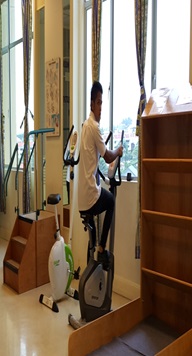What is Coronary Artery Bypass Graft (CABG)?
Coronary artery bypass grafting (CABG) is a type of surgery that improves blood flow to the heart. Surgeons use CABG to treat people who have severe Coronary Heart Disease (CHD).
CHD is a disease in which a waxy substance called plaque builds up inside the coronary arteries. These arteries supply oxygen-rich blood to your heart.
Over time, plaque can harden or rupture (break open). Hardened plaque narrows the coronary arteries and reduces the flow of oxygen-rich blood to the heart. This can cause chest pain or discomfort called angina.
If the plaque ruptures, a blood clot can form on its surface. A large blood clot can almost or completely block the blood flow through a coronary artery. This is the most common cause of a heart attack. Over time, ruptured plaque also hardens and narrows the coronary arteries.
CABG is one of the treatments for CHD. During CABG, a healthy artery or vein from the body is connected, or grafted, to the blocked coronary artery. The grafted artery or vein bypasses (that is, goes around) the blocked portion of the coronary artery. This creates a new path for oxygen-rich blood to flow to the heart muscle. Surgeons can bypass multiple coronary arteries during one surgery.
Cardiac Rehabilitation Phase I (CCU & continued in ward)
In Phase I, the goal of exercise is to prevent the deleterious effects of bedrest by making a gradual transition from passive range of motion (PROM) to active range of motion (AROM) exercise and low intensity, short duration ambulation. Chest physiotherapy intervention during this time is very important.
Chest physiotherapy includes :
- Steam inhalation / saline nebulizer
- Active Cycle Breathing Technique (ACBT)
- Thoracic mobility exercise
- Airway clearance and suctioning if necessary
 |
 |
| Transfer from bed to chair | Breathing exercise with Incentive spirometer |
 |
 |
| Ambulation in ward | Stair climbing |
Limb Physiotherapy includes :
- Circulatory exercise
- Active free – exercise for upper limb and lower limb (sternal precaution-care of the sternotomy incision during exercises)
Cardiac Rehabilitation Phase 2 (After discharge and lasts to 6-8 weeks)
This program begins when the patient is discharged from the hospital and it continues for six weeks to eight weeks. The goals are to improve functional activity, greater aerobic capacity, improve quality of life and to provide patient education on how to prevent complications
Exercise program
Circuit exercises – this includes endurance and strengthening exercises
Examples of exercises :
Cycling, Treadmill, Bicep curl, Stairs climbing, walking
 |
 |
| Cycling exercise | Climbing stairs exercise |
 |
 |
| Warm up session | Upper cycle exercise |
References
- Brasher PA, McClelland KH, Denehy L, Story I. Does removal of deep breathing exercises from a physiotherapy program including pre-operative education and early mobilisation after cardiac surgery alter patient outcomes? Aust J Physiother 2003;49:165–73
- Haeffener MP, Ferreira MG, Menna-Barreto SS, Arena R, Dall’Ago P. Incentive spirometry with expiratory positive airway pressure reduces pulmonary complications, improves pulmonary function and 6-minute walk distance in patients undergoing coronary artery bypass graft surgery. Am Heart J 2008;156:900.e1-8.
- Hirschhorn AD, Richards D, Mungovan SF, Morris NR, Adams L. Moderate intensity exercise improves distance walked at hospital discharge following coronary artery bypass graft surgery-a randomised controlled trial. Heart Lung Circ 2008;17:129-38
- Physical activity after heart attack and surgery: National Heart Foundation of Australia; 2003.
- www.nhlbi.nih.gov/health/health-topics/topics/cabgSource image
1. (2014) Unit Fisioterapi Hospital Queen Elizabeth 2.
| Last Reviewed | : | 23 August 2019 |
| Writer / Translator | : | Sahira Nadiah Shirlen Oyon |
| Accreditor | : | Haironi Ismail |
| Reviewer | : | Halimah bt. Hashim |







